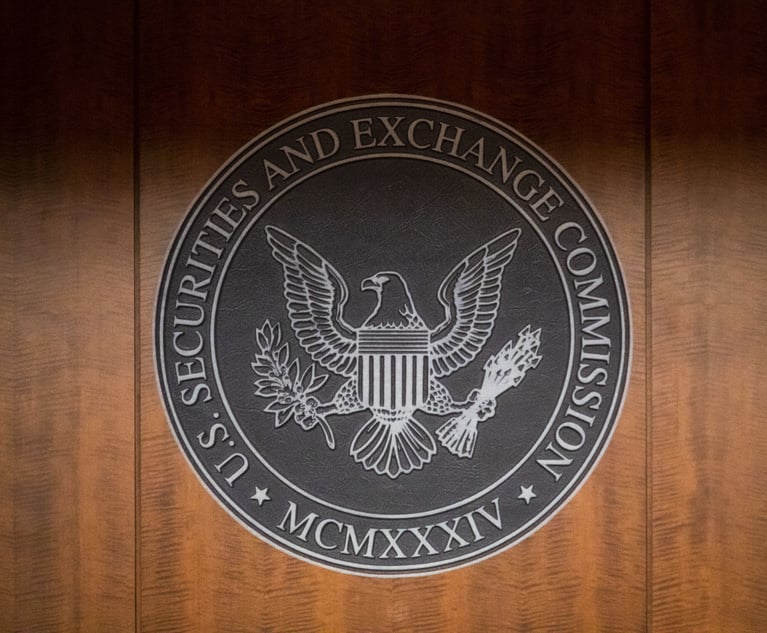Most big trades between the world's largest banks and customersin the $442 trillion interest-rate swap market are hedged within 30minutes of the transaction, according to the Federal Reserve Bankof New York.
|Researchers at the Fed analyzed three months of interest-ratederivative market information for a study released today on howpublic price reporting may affect trading in the instruments. Thereport found that the 14 largest banks offset their trades withinhalf an hour about 60 percent of the time. That contrasts withhedging in the credit-default swap market, because banks can hedgerisk in rates more easily, the report said. Delays in reportinglarge trades are being debated by U.S. regulators to offer time forbanks to offset the risk they take.
|The finding “appears to highlight a significant contrast to thecredit-default swap market, where earlier published analysis foundlittle evidence of large customer trades being offset throughsubsequent trading on the same or next day,” the central bank studysaid. “Our findings suggest that introducing a public pricereporting regime may not disrupt hedging activity in interest-rateswaps as long as there are meaningful protections that delayreporting or mask trade sizes.”
|The Commodity Futures Trading Commission and Securities andExchange Commission are leading efforts to write rules mandated bythe Dodd-Frank Act to reduce risk and boost transparency in tradesby firms including Deutsche Bank AG, Barclays Plc and Cargill Inc.Dodd-Frank was enacted by President Barack Obama in July 2010 aftertrades in the unregulated swaps market helped fuel the 2008 creditcrisis.
|The world's biggest 14 banks didn't offset large corporate orsovereign CDS trades with customers on the same day 45 percent ofthe time, a similar study by the New York Fed found in September.Banks didn't hedge large trades the day after in 67 percent ofcases, the study said.
|Banks say they need extra time before large trades are reportedto enter into offsetting transactions to reduce their exposure andto prevent competitors from profiting by trading ahead of thehedging.
|The CFTC has yet to define what makes up a large trade in theswaps market. Until that definition is created, all swaps reportingis subject to a delay of at least 30 minutes, according to thefinal rule passed by the agency in December. End users such ascorporations will get a 48-hour delay, the CFTC said.
|The central bank suggested using the period of time covered byan interest-rate swap, known as the tenor, as a way to determinewhat trades should trigger the delay. The notional size of tradesin rate swaps decreases as the trades lengthen in time, the studyfound.
|It recommended dividing the market into nine categories based onthe tenor, such as swaps written to last for one to three months,or one to two years. Amounts within those time periods could thenbe established to get protection from the time delay. The reportalso said the rules should distinguish between contractsdenominated in U.S. dollars, euros, Japanese yen and Britishpounds, and all other currencies.
|The CFTC has put out a proposal for industry comment that wouldseparate the interest-rate swap market into eight tenors fordetermining large trade size. The CFTC used the same data that theNew York Fed analyzed in the rate swap market. Comments on the CFTCproposal are due by May 14.
|The data was gathered from actual trades in the interest-ratederivative market from June to August 2010. It found about 300users of the instruments, which is dominated by the world's 14largest banks. Average trade size was $270 million with about $683billion in notional value traded daily. Trading in interest-rateswaps was infrequent, with no rate swap changing hands more than150 times a day on average, the study said.
|The full New York Fed study is here.
|Copyright 2018 Bloomberg. All rightsreserved. This material may not be published, broadcast, rewritten,or redistributed.
Complete your profile to continue reading and get FREE access to Treasury & Risk, part of your ALM digital membership.
Your access to unlimited Treasury & Risk content isn’t changing.
Once you are an ALM digital member, you’ll receive:
- Critical Treasury & Risk information including in-depth analysis of treasury and finance best practices, case studies with corporate innovators, informative newsletters, educational webcasts and videos, and resources from industry leaders.
- Exclusive discounts on ALM and Treasury & Risk events.
- Access to other award-winning ALM websites including PropertyCasualty360.com and Law.com.
*May exclude premium content
Already have an account? Sign In
© 2024 ALM Global, LLC, All Rights Reserved. Request academic re-use from www.copyright.com. All other uses, submit a request to [email protected]. For more information visit Asset & Logo Licensing.







